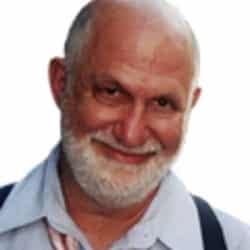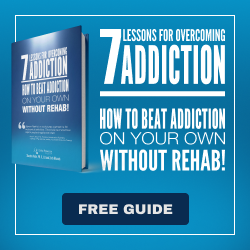“Bruce” Is Mental Illness and Psych Meds
Does Bruce Springsteen symbolize creativity, engagement, and superseding early roots? Instead, for some he symbolizes mental illness and requiring psychiatric medications to live.
Bruce Springsteen’s Legacy
If it were possible, Bruce Springsteen is having a “moment” in the world spotlight.
“If it were possible” refers to Springsteen’s already being an international musical icon. Springsteen emerged from the New Jersey shore to pioneer a heartland style of rock music that narrated working class American life. He is known for his poetic, socially conscious lyrics and engaging with audiences in long, energetic concerts. As such, he has become a rock icon with a career spanning five decades,
On top of this, he and Barack Obama have released a joint podcast series and book. “Renegades” is built on their inspiring experiences as outsiders who achieved world renown through their life’s work.
But this aspect of his life is being superseded for some by Springsteen’s revelations about his depression. In her opinion piece in the New York Times, “My Mental Health Issues Have a Name: Bruce,” writer Lily Burana identifies his impact on diagnosing her mental illnesses.
“Over time, the diagnoses have added up: depression plus generalized anxiety disorder. After I got my third diagnosis, inattentive-type attention deficit hyperactivity disorder,” Burana decided she “needed a term that encapsulated everything.” That term is “Bruce.”
“Since being diagnosed with depression in my 20s, I have been candid about my mental illness. To counter the stigma, I share that I go to therapy, and that via daily medication I am in the Better Living Through Chemistry.”
Ms. Burana recently expanded her diagnostic net. Being diagnosed with anxiety and depression was insufficient. She only belatedly came to realize that, in addition, she had another mental health condition— ADHD— that had gone unrecognized.
“A.D.H.D., anxiety, depression: I’d hit a comorbidity hat trick. I’m not surprised my A.D.H.D. diagnosis came last. Research shows that women are underdiagnosed, improperly diagnosed and diagnosed much later in life than boys and men, as women tend to have the inattentive type of A.D.H.D., rather than the garrulous, constantly-in-motion variety often equated with the disorder. Under-diagnosis is even greater among Black girls and women.”
ADHD is a broad label. Psychiatrist Bruce Perry — who is revered for identifying the impact of childhood trauma on lifetime mental illness — has said: “Attention Deficit Hyperactivity Disorder (ADHD) describes a broad set of symptoms. Many of us at any given time would fit at least a couple of the diagnostic criteria for ADHD.”
I know that I would. And I enjoyed a friend’s Adderall when I took it. But I eschewed it for me and my children, as I described in my memoir: A Scientific Life on the Edge.
The Costs and Benefits of ADHD
Her tripartite diagnosis wasn’t entirely liberating for Ms. Burana: “After my A.D.H.D. diagnosis, I was overcome with emotion — relief, yes, at having an explanation for why my mind pinged between daydreaming, emotional overload and obsessive hyper-focus, but also shame, anxiety and grief. Shame around feeling abnormal and difficult. Anxiety around finding effective treatment. And grief for opportunities lost.”
Although she regrets the opportunities lost, Ms. Burana is a mother and successful writer. But life still has drawbacks, despite her search for the best combination of medications.
“Finding the proper medication, or medications, to treat overlapping mental health conditions is more often a wavy course than a straight line, as exhibited by my own trial-and-error. Eventually, I found I function and feel best with daily Lexapro, extended-release Adderall and the occasional Klonopin for intense spikes of anxiety. I cling to these pills like the lifeline they are, traveling with my meds in a tote bag clutched over my shoulder, pills rattling in their plastic amber bottles, marking each step like psychopharmacological maracas.”
The results are not perfect. “With vigilance, plus medication and regular therapy, I feel mostly OK, most of the time. My work gets done, my obligations met; the black-dog days stand stark in their rare awfulness.”
Seeing Her Inspiration, Bruce
Burana attributes finally accepting her combined disorder to Bruce Springsteen. And, she says, her mental disorder led her to actually see Springsteen perform. “It was likely A.D.H.D. that spurred me into buying a last-minute ticket to ‘Springsteen on Broadway’ in July while evading sleep at 1 a.m. This particular form of executive dysfunction is known for impulsivity, after all.”
Adderall didn’t stop her ADHD from causing her to buy a ticket to see Springsteen, which seems like a good thing. Then “I took my Adderall the morning of the show.” This was necessary because, otherwise, “attending unmedicated would have had my mind wandering as I watched Springsteen perform: I wonder what song he’ll do next. You know what song is great? ‘Candy’s Room.’ Oh, man, I should’ve gotten some candy at the concession stand before the show started. Does he need to wear orthotics in those boots, standing for more than two hours every performance?”
Are those thoughts all signs of sickness? (Uh-oh for me!)
With the Adderall, “once the show began, I was fixed on the legend in the spotlight unfurling his life story from peak to vale and pealing out songs.”
Can that experience and some mind wandering not both happen?
But her perfect appreciation was impeded by one thing: “the woman next to me silently weeping diverted my attention.”
Why was the woman weeping? Did the performance touch her so much that she cried? Isn’t engaging that response Bruce Springsteen’s purpose in life?
For Ms. Burana, “I’d have cried, too, but Adderall and Lexapro dancing cheek to cheek in my bloodstream make it all but impossible.”
She can no longer cry?
Bruce Springsteen has inspired her life, but not through his music: “As I count out my pills, I count my blessings. Isn’t it funny how a cluster of diagnoses can rob with one hand, and, once managed, grant you purpose with another? And isn’t it funny how an entire constellation of thoughts, and an entire way of being, can spin out from a single star?”
According to Ms. Burana, music isn’t Bruce Springsteen’s greatest contribution to the world. Indeed, in some ways, the music must be sacrificed to the medications. As Springsteen inspires more fans to medicate themselves, perhaps they will no longer be moved to tears by his music.
The Black Male ADHD “Trap”
There is an irony to this story. Ms. Burana is very concerned about the insufficient diagnosis of ADHD for Black women because of its being reserved mainly for Black boys. Yet the frequent diagnosis of young Blacks with ADHD has been a bone of contention for many. One such African American researcher and activist is Shallonda Bush-Daniels, the author of “Examining the Overrepresentation of African-American Males in Special Education.”
This was her experience: “For over ten years I have been employed by the New York City Department of Education. During those years, I have witnessed that within the special education population of the school, the majority of students were Black and/or Hispanic. I am generally concerned with the huge disproportionality when it comes to African-American males being placed into special education classes.”
The reason for her concern:
“What is the problem when it comes to African-American males regarding their academic achievement? Is the problem based on a genetic factor? Are African-American males genetically inferior to their European counterparts in regards to academics?”
Or is there a different story?
“Are African- American males being misdiagnosed? Are teachers’ perceptions and attitudes towards African- American males taking the place of a proper evaluation?”
Bush-Daniels feels “the most prevalent factors that contribute to this epidemic are poverty and the perceptions of teachers, their attitudes towards African-American men and their lack of cultural understanding.”
She thus doesn’t feel that diagnosis and medication are the answers. Rather, these things prevent young Blacks from achieving a good position in society. The solution instead requires that we “improve the equity of placement and ultimately increase the overall attendance rate of African-American males in areas of higher education and give them the opportunity to attain prominent positions in the workforce.”
I wonder how Ms. Bush-Daniels would react to spreading the frequent diagnosis of ADHD among Black boys to an equal number of Black girls and women?






